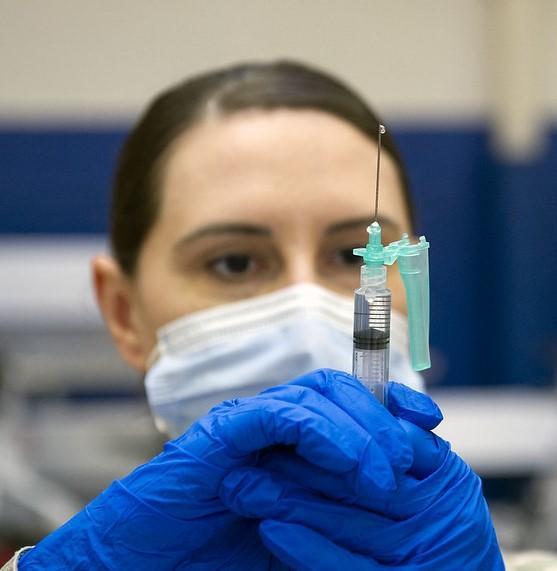In a publication in BMJ Public Health on June 3, Saskia Mostert, MD, PhD, and colleagues discuss excess mortality during the COVID-19 pandemic, and this paper has already led to much debate and confusion on both traditional and social media and has been used as fodder for anti-vaccine advocates. The paper's results have been taken to mean that vaccines are dangerous, and this has led to critical commentaries from other researchers as well as some of the authors who felt their work was not cited correctly.
We give a brief summary of some of this criticism, add some additional concerns about the paper, and make the case for retraction of the paper.
Multiple concerns
Mostert et al discuss estimates of excess mortality—the increase above an expected pre-pandemic baseline—during the COVID-19 pandemic period of 2020 to 2022 for 47 countries of the Western world. They conclude that the excess mortality was high during these years, despite the implementation of containment measures and COVID-19 vaccines and that this raises serious concern. They write, "Government leaders and policymakers need to thoroughly investigate the underlying causes of persistent excess mortality."
It is not immediately clear from the abstract of the paper what the authors saw in the excess mortality data that concerns them so. However, as major sections in the paper are dedicated to the discussion of perceived problems of serious adverse effects of vaccines and indirect mortality caused by non-pharmaceutical interventions, the public response to the article has been to take the article as evidence for vaccination and mitigation being the main causes of excess mortality—rather than the far more plausible explanation that widespread COVID-19 disease was the main cause of excess mortality.
It is not immediately clear from the abstract of the paper what the authors saw in the excess mortality data that concerns them so.
The work of Mostert and colleagues has been called into question by others, as cataloged on pubpeer and by Retraction Watch. Stuart McDonald, MBE, has a thorough discussion in a blog post detailing many of the concerns with the paper. A commentary co-authored by one of the plagiarized authors, Ariel Karlinsky, is also due to appear shortly. Finally, the research institutions of three of the four authors have distanced themselves from the paper. The cited funding agency has said it has been incorrectly listed as a sponsor of the publication.
Just 3 days after publication, the journal that published the work, BMJ Public Health, issued a statement emphasizing that the news coverage of the publication has misrepresented the contents of the study. The statement, however, does not respond to claims of plagiarism or whether the article is under consideration for retraction. In a June 13 BMJ press release, the journal announced its intentions to publish an expression of concern on the paper and to investigate the quality of the research.
Here are some concerns that such an investigation needs to address.
Misquotes and omissions on vaccine effects
Mostert et al make a lengthy argument that COVID-19 vaccines are associated with a high risk of severe adverse events. They write, "Numerous studies reported that COVID-19 vaccination may induce myocarditis, pericarditis and autoimmune disease." For this they misquote a review by Dotan et al on the risk of autoimmunity following SARS-CoV-2 infection. Dotan et al had in fact concluded vaccination can overcome this problem.
They quote one study (Fraiman et al) that calculated as many as 1 to 2 severe adverse event per 1,000 vaccines, something that is in stark contrast to the conclusions of no evidence of severe adverse events in the original Pfizer and Moderna clinical trial publications. More helpful would have been to cite real-world evidence from a cohort study of 23 million Nordic residents—what actually happened when millions of people used COVID-19 vaccines. This study found far lower levels of myocarditis and pericarditis associated with vaccination among young adults and no deaths. Therefore, these rare events in young adults that were not deadly could never explain the excess mortality during the COVID-19 pandemic which was largely in the elderly.
Mostert et al do not dwell on the fact that COVID-19 vaccines have been shown repeatedly to be highly effective: Both clinical trials and observational studies have found that they prevented about 9 out of 10 (~90%) of severe COVID-19 outcomes (severe disease and death). A new WHO study estimates that COVID-19 vaccine saved 1.4 million lives in Europe and more than halved the number of COVID-19 death toll that could have happened. The vaccinations attenuated the mortality potential, and the remaining excess mortality of 2.5 million is what could not be prevented, either before the vaccines were available by mid-2021, or because of low vaccination coverage in some settings, especially in Eastern Europe. Knowing this and writing about this is, of course, important if one wishes to seriously evaluate the observed excess mortality during COVID-19.
Misrepresentation of the severity of the pandemic
Mostert et al also have a lengthy section that suggests the pandemic wasn't very severe. They write that the infection-fatality rate (IFR) of COVID-19 before vaccines was 0.23% globally, and as low as 0.03% in adults under 60 years of age. This can erroneously be interpreted to mean that mortality caused by COVID-19 in Western countries was negligible.
The authors did not cite the relevant studies of IFR as it has played out in aging Western populations. A November 2020 Nature paper by O'Driscoll et al computes an IFR of ~0.8% in Western countries. And this may in fact be a low estimate, as this analysis was published before the emergence of the deadlier Alpha and Delta variants in 2021 (Davies et al [Nature March 2021] and Twohig et al [Lancet Inf Dis August 2021]). When Mostert et al ignore the higher IFRs for Western populations, they mislead the reader to think that the COVID-19 pandemic was not serious. This is simply untrue, COVID-19 had a great severe disease and mortality potential especially in aging western populations and was a real 100-year event and a serious societal threat that required a forceful response.
The authors did not cite the relevant studies of IFR as it has played out in aging Western populations
The disaster in the Lombardy region of northern Italy early in the pandemic (caught unaware, and before vaccines) clearly demonstrates what could have happened (Modi et al [Nature May 2021]).
But Mostert et al state, "Although COVID-19 containment measures and COVID-19 vaccines were thus implemented to protect citizens from suffering morbidity and mortality by the COVID-19 virus, they may have detrimental effects that cause inferior outcomes as well," and this can be erroneously taken to mean that the cure was worse than the disease.
Plagiarism
On top of all of this, serious concerns about plagiarism have also been raised, as the excess mortality data presented are taken from previously published work by Karlinsky and Kobak (2021) and their World Mortality website, where the two scientists continuously provided excess mortality data throughout the pandemic.
Why Mostert et al copy Karlinsky and Kobak's prose and equations from their June 2021 eLIFE paper verbatim is unclear, but it is certainly not following good practices for citations. As Mostert et al did not further analyze these excess mortality estimates, the BMJ Public Health paper is not truly an original research contribution.
A retraction is warranted
Mostert et al should not disregard the most likely explanation for excess mortality: namely that the emerging COVID-19 virus explains most excess deaths during the pandemic. Lee et al in
February 2023 computed that 85% of excess deaths in the United States were explained directly by the COVID-19 virus. Thus, there is no need to invoke other and unlikely explanations—such as vaccine adverse events—to explain excess mortality in Western countries.
A retraction is appropriate for this misleading paper that is not an original contribution.
In our opinion, a retraction is appropriate for this misleading paper that is not an original contribution. The publication of such work in a journal like BMJ Public Health can, to use the words of one commenter, be used as a figurative Trojan horse, seemingly giving unwarranted credibility to vaccine misinformation under the guise of statistical estimates of excess mortality. It is so important that scientific journals like BMJ take action and responsibility in an unfortunate situation like this where vaccine and pandemic misinformation appears credible by appearing in a top line peer reviewed medical journal.
_________________________
Dr Simonsen, a professor of epidemiology, is director of PandemiX, a Center of Excellence at Roskilde University in Denmark. Dr. Pedersen is a mathematical modeler and postdoc at PandemiX.



















